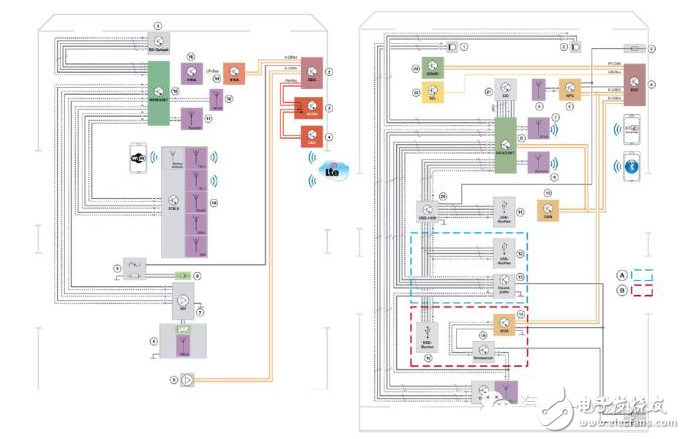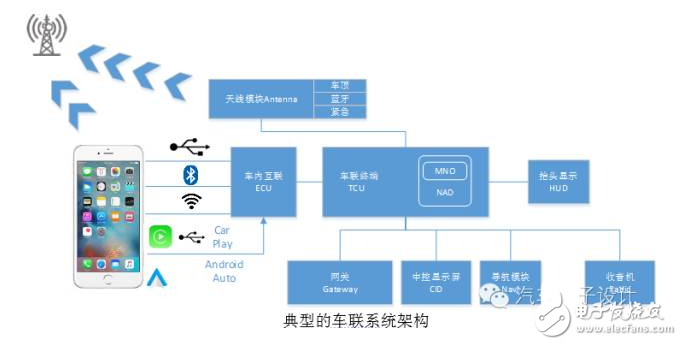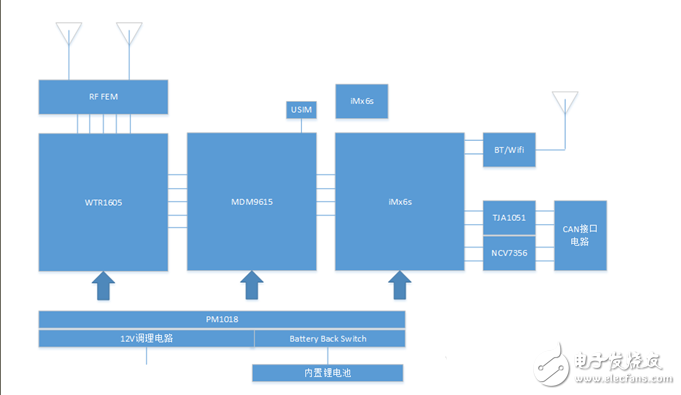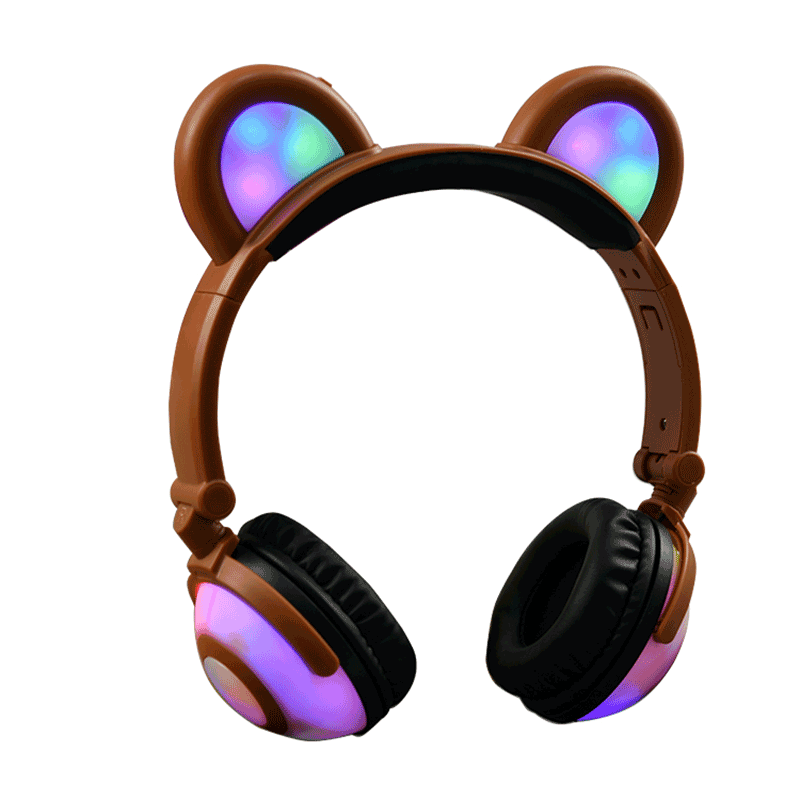Dai Xiong said that the second-line OEM gave him a price of 500 for Tbox. A while ago, Xu Xiong said that his LCD instrument manufacturer said that the gadgets and navigation are not a price. In fact, if you only press the function, only consider this cost purchase, China’s Automotive electronics may never grow up. Here is still talk about the car networking module, by the way to support the two careers, China's soil sometimes makes it difficult for ordinary companies to grow up. This article starts with the configuration of the car system and the actual situation of the car terminal. Let's talk about the TelemaTIcs Control Unit, commonly known as the T-box, and then outline the future development direction according to the requirements of the future ADAS for the car terminal. The traditional vehicle networking refers to the networked system installed in the vehicle, which realizes the static and dynamic information extraction and effective utilization of the vehicle on the network platform, and effectively monitors and services the vehicle running state. The concept of car networking is gradually extended to develop on the basis of in-vehicle network system, communication between vehicles and vehicles, and on-board mobile Internet. In accordance with the agreed communication protocol and data interaction standards, in the car to X (X: car, road, pedestrian And the Internet, etc., a large system network for wireless communication and information exchange. Take the BMW 7 Series as an example. The entire architecture is divided into antennas, modules and user interfaces. The left half is the antenna structure diagram, and the right half is the system structure diagram. 1) Overview and classification of the car system To put it simply, the two driving forces of the Internet of Vehicles are mainly that the users of the car want to connect wirelessly, and more expect to bring substantial content through this connection, and to connect the mobile phones that he uses every day; The company hopes to use wireless to serialize the vehicle and push it to the consumer service through the built-in embedded T-box, so that consumers can enter the monthly paid service after a period of experience, which is a derivative. The business is doing it. Vehicle network technology system can be divided into two basic ways Mobile communication Communication system in the car itself The car system architecture in the car is shown below: 1) Mobile phone: More design is built around the consumer's mobile phone. It can be considered that consumers can connect with the interconnected modules in the car to form an entertainment mode dominated by consumers' original habits. 2) In-vehicle interconnection module: The interactive module ECU corresponding to the mobile phone connects the mobile phone system with other systems in the car through USB, Bluetooth and WIFI modes. 3) In-car display unit a. Central control display CID: provided to the consumer as the main display of navigation operations b. Head up to display HUD: HUD has become part of the display 4) Antenna module: The high-end related to the high-end of the car terminal is the various antennas, including the roof wire module, the emergency telephone backup antenna and the Bluetooth antenna. 5) Car Link Terminal: This is the TCU we usually say, which includes the broadband part, the radio frequency part, the power supply part, the in-vehicle communication part and the main control chip. Let us give an example to illustrate that its structure is • Power section: The power section is mainly completed by PM1018. The battery is powered by two parts. The 12V power supply from the car and the built-in lithium battery unit are used as backup power. • Master unit: Organized by iMx6s. • Broadband Module: The MDM9615 is a Mobile Data Modem chip from Qualcomm that supports LTE (FDD and TDD), dual carrier HSPA+, EV-DO Rev. B and TD-SCDMA. • CAN Transceiver: It consists of two chips, TJA1051 and NCV7346, which are connected to the CAN network of the whole vehicle through the CAN interface circuit.
Bear ear headphone is a patented headphone designed exclusively by LINX Headphone Factory, which has Chinese and EU patents. On the basis of ordinary headphones, plus bear ears, it is more lovely. The earphones emit LED lights, and the lights can be freely controlled. There are 4 ways: flash with the rhythm of music, flash, steady and light off.
Advantages:
1. Bear ears, exclusive private model patent, cute shape.
2. LED colorful light.
3. Multiple colors, can be mixed batch.
4. Stock, 24 hours delivery.
5. Colors can be customized freely.
6. Wired Bear Ear Headphones and Bluetooth bear ear headphones are optional.
Bear Ear Headphones Bear Ear Headphones,Bear Headphones,Bear Earphones,Bear Ear LED Headphones Shenzhen Linx Technology Co., Ltd. , https://www.linxheadphone.com



